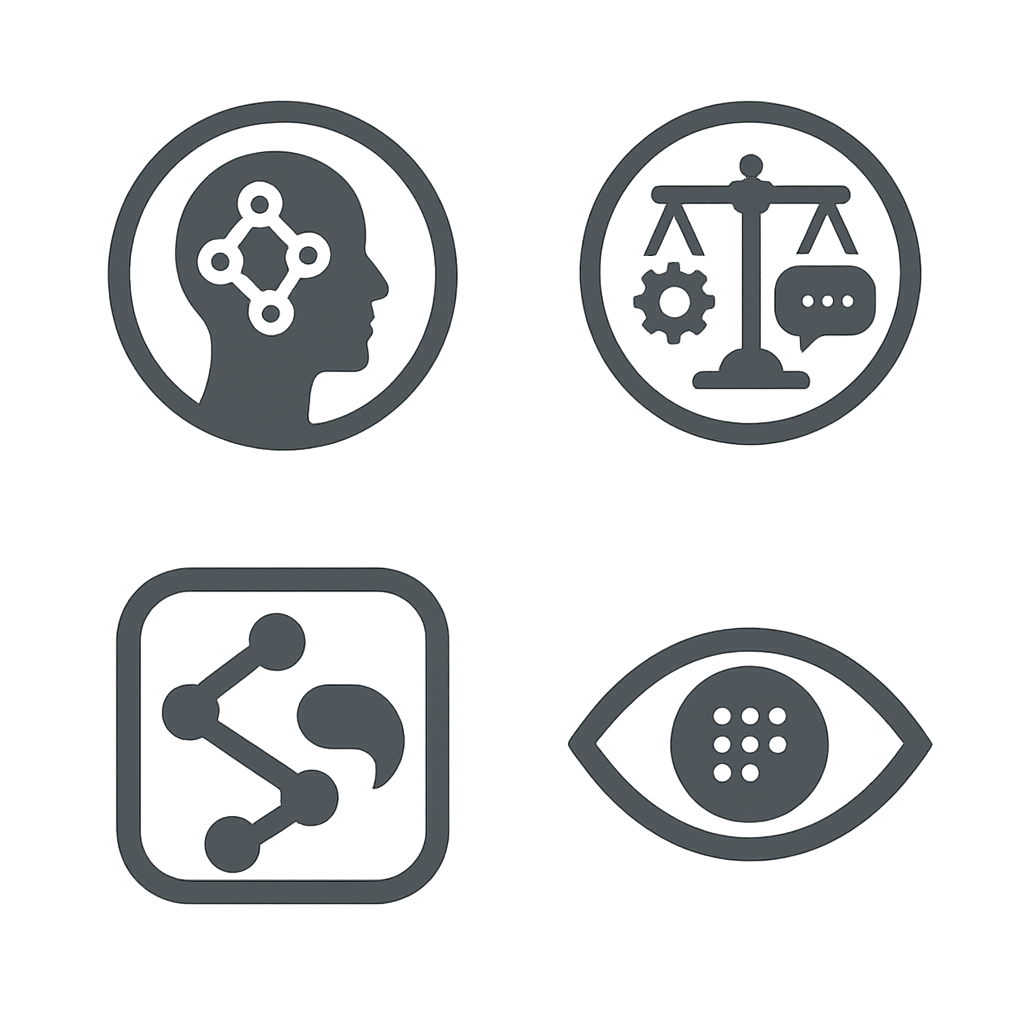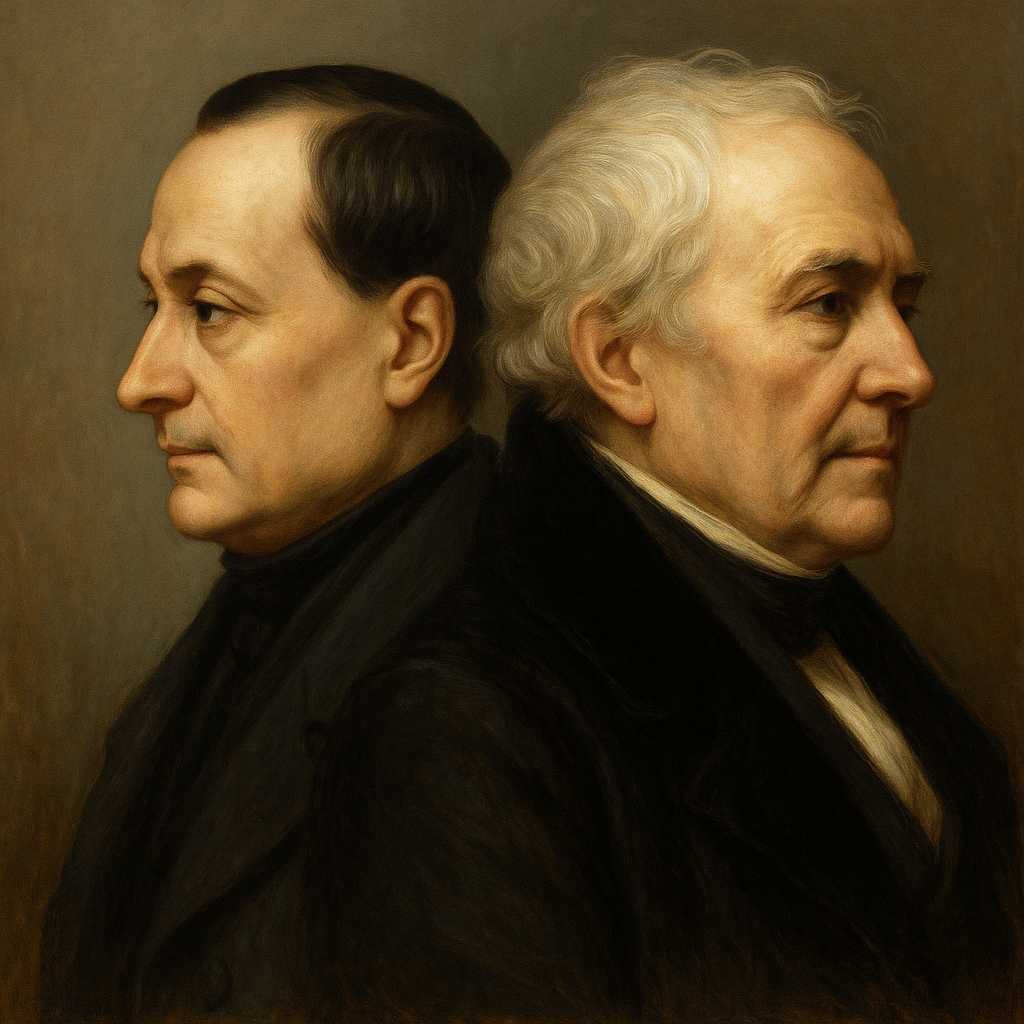I read AI with Comte and Saint-Simon as a twin project: a new phase of positive science that promises prediction and coordination—and a political task to organize industry and knowledge for the common good. The hard question they force on me is not whether AI “works,” but to what social ends it is steered and under whose institutional authority (Comte 1865; Saint-Simon 1825).
Why these two—why now?
Comte framed sociology as the capstone of a scientific hierarchy and advanced his “law of three stages,” pushing inquiry beyond theological and metaphysical speculation to empirical explanation of social life (Comte 1830–1842). Saint-Simon argued that modern societies should be administered by those who produce and know—industrialists, engineers, scientists—guided by a moral imperative to improve the condition of the poorest (Saint-Simon 1825). Together they help me ask how AI concentrates expertise and power, and which institutions can align it with democratic and social aims.
Four Comte–Saint-Simon lenses on AI
1) AI as part of the positive sciences. Comte would treat today’s models as extensions of the “positive” method—observation, comparison, and law-seeking generalization—now applied to language and behavior. He would place AI within his classification of the sciences, insisting that only when the social realm is explained by regularities, not metaphysics, can we govern it responsibly (Comte 1830–1842/1865).
2) Social engineering—and its limits. Saint-Simon’s industrialism imagines coordination led by producers and experts. In AI terms: benchmarks, standards, and infrastructure run by those who build and operate systems. But his own Nouveau christianisme binds this technocracy to a test of legitimacy: whether institutions measurably ameliorate the moral and physical existence of the poorest (Saint-Simon 1825). That criterion travels well to AI governance today.
3) From “social physics” to sociology. Comte coined and defended “positive philosophy” and “social physics,” then stabilized the discipline as “sociology.” He would press us to publish laws of model behavior and institutional failure, not only case anecdotes—while warning against borrowing prestige from physics without matching its discipline (Comte 1830–1842).
4) Moral order and public cohesion. Late Comte proposed a “Religion of Humanity,” a civic framework to bind scientific societies together. Whether or not one accepts his liturgy, the governance insight remains: technical coordination without shared civic purpose drifts into domination or fragmentation (Comte 1865).
Three quick applications
Public services. A Saint-Simonien would ask whether automated eligibility and scoring systems demonstrably raise the well-being of the worst-off; if not, redesign or revoke. Comte would require public, law-like reporting of errors and remedies—not just accuracy averages—before claiming “scientific” legitimacy (Saint-Simon 1825; Comte 1865).
Industrial AI & logistics. Platform scheduling and quality metrics look like the new “industrial administration.” The test is whether governance sits only with capital or is institutionalized with producers and publics—standards bodies with representation, open audits, and enforceable remedies (Britannica on Saint-Simon).
Research ecosystems. Comte’s hierarchy invites us to publish cumulative knowledge about model behavior across domains, not one-off demos; Saint-Simon adds the organizational question: who allocates compute and data—private monopolies, public consortia, or hybrid regimes? (Comte 1830–1842; Saint-Simon 1825).
How I’d study this with students
- Positive-method audit: For any AI deployment, document the observable regularities (error types, social impacts) that justify claims of “scientific” operation; publish protocols and falsification routes (Comte).
- Industrial governance map: List who controls compute, data, benchmarks, and safety rules; check representation of workers, users, and the poorest; tie each control point to measurable welfare outcomes (Saint-Simon).
- Poorest-first evaluation: Before/after studies that track benefits for the least advantaged as a condition of legitimacy (Saint-Simon). Quote and operationalize his maxim from New Christianity.
Where they differ—and why that helps
Comte gives me a disciplined epistemology, but risks technocratic overreach if detached from civic purpose. Saint-Simon gives me a social objective—improve the lot of the poorest—but risks expert paternalism if unchecked by public contestation. Holding them together yields a demanding standard for AI: empirical lawfulness and moral accountability.
Literature (APA)
Comte, A. (1865). A general view of positivism (J. H. Bridges, Trans.). London: Trübner. A General View of Positivism.
Comte, A. (1830–1842). Cours de philosophie positive. (Various vols.). For overview see Britannica: Law of three stages. and Cambridge excerpt: Cours de philosophie positive (Sociology, ch. 15).
Saint-Simon, C. H. de (1825/1834). New Christianity (J. E. Smith, Trans.). London: B. D. Cousins & Effingham Wilson. The New Christianity (PDF).
Britannica. (2025). Henri de Saint-Simon. Henri de Saint-Simon.
JSTOR (1969). Saint-Simon’s Industrial Society in Modern Perspective. Saint-Simon’s Industrial Society in Modern Perspective.


Schreibe einen Kommentar